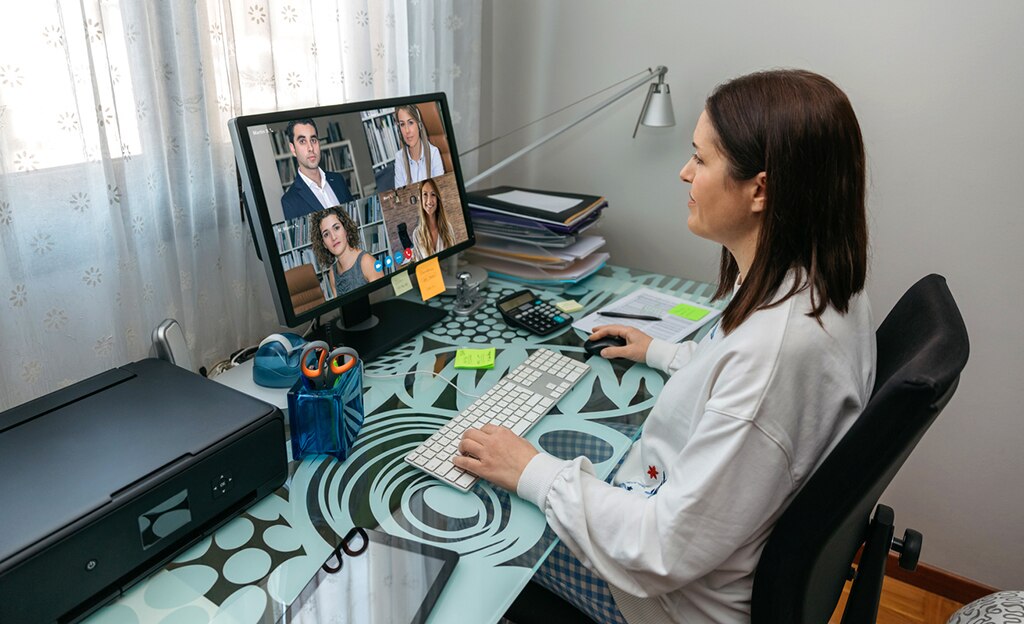Onboarding is all about providing a new starter with the information they need to do their job and to help them feel part of the company culture.
A successful onboarding process allows a new hire to understand how the business works, provides them with access to the right tools and resources and fosters relationships with their new colleagues.
However, with new social distancing protocols and possibly more employees working from home, more organisations are considering how to onboard new employees remotely.
Without face-to-face meetings, remote or digital onboarding means calls, video conferences and email become core communication channels and will play an essential role in integrating a new hire into the company.
Making sure remote workers feel as welcomed and part of your business as much as those who are office-based is vital to maintain company culture and also ensures new starters can hit the ground running in their new role.
In this Remote Onboarding Guide, you’ll find actions for setting up a new starter, tips on how to onboard a remote worker on their first day and ideas to encourage virtual team bonding.
.
Getting Started


Onboarding doesn’t begin when a new hire officially joins the business on their first day. You can help your new team member to feel prepared by sending necessary work items to their home and sharing any relevant business information ahead of time.
Send necessary equipment
If your new starter is working from home then get their laptop and any other tools sent to their house, along with clear setup instructions, ahead of their first day on the job. It means there’s time to sort out any technical problems that might come with setting up at home.
Share a welcome pack
Working remotely can make it challenging for a new starter to get a sense of the company culture in the same way they would in an office environment. You might want to consider sharing a personalised welcome pack with them, with useful items like branded notebooks, pens and other items to help them feel part of the team.
Facilitate team building
Book in time for introductory meetings for your new starter’s first few days at work, so they have something in their diaries and can build a better picture of their future team members.
It doesn’t have to be all about work — building rapport can be more difficult when working remotely, so consciously putting aside time for informal chats is also key. With this, hiring managers can highlight to other team members the importance of reaching out to the new starter once they’re at work, via email, instant messaging, or other digital channels, to make sure they feel welcomed and involved, even when working remotely.
Assign a buddy or mentor
It can be a good idea to ask a member of your team, or a colleague in another department, to act as the new starter’s buddy or mentor. This person can be the go-to for a quick question about how something works or can be there for a virtual coffee break and catch up.
For new starters, having someone to confide in who isn’t their manager can help them feel at ease and free to ask any questions — even if they might shy away from this in a team setting. Be sure to book in time in diaries, so when your new starter does begin work, they can be introduced to their buddy early on.
The First Day


With all the technicals already set up, a new starter’s first day can be all about getting to know colleagues and learning more about the business and their new role.
Here’s a suggested first-day schedule for a remote worker’s first day.
Suggested first-day schedule for remote workers
09:30 — 10:30 Welcome call with the manager
10:30 — 11:00 Team call
11:00 — 12:00 Task set by manager
12:00 — 13:00 Lunch
13:00 — 15:00 20 minutes call with each team member
15:00 — 16:00 Task set by manager
16:30 — 1700 Debrief call with manager
Virtual Team Bonding


Not being able to turn to a colleague at the desk beside them to ask a question can mean there’s a risk that new remote workers can feel isolated. To prevent this from happening, when approaching digital onboarding, extra steps should be taken to communicate regularly with a new hire — particularly during the first days and weeks on the job.
Welcome video call
You wouldn’t keep a new starter waiting in reception on their first day in the office, and so the same goes when virtual onboarding a new member of the team.
Schedule a welcome call on their first day at their start time and take the opportunity to get to know your new starter. No need to go straight into work chat — this conversation is the start of building a trusting working relationship and learning more about them as a person.
You can also book in an end-of-week chat with them, to get a sense of how they found it, any questions they have now they know a little more about the business, and any feedback they might have on the tasks and meetings they took part in.
Virtual check ins
Supporting your new starter in the first days in the company doesn’t mean your usual day to day work goes away. Your diary might already be packed full of other meetings, and your new starter might want to avoid bombarding you with queries. One way to make sure you’re still getting (virtual) face time and to give them a forum so they can raise any questions with you is to book in a daily or twice daily catch up over video call to see how they’re getting on.
Digital coffee breaks
As well as inviting your new starter to your team meetings, make sure there’s time for everyone to have regular chats together. Organise one-on-one catch-ups with team members, as well as group catch-ups, to boost team morale and integrate your new starter into the team. When you can’t pop to the office kitchen for a tea or coffee break, make it virtual.
